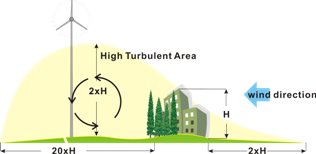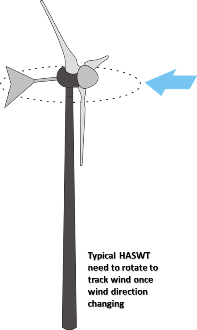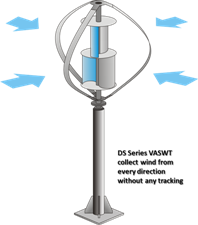In general, there are two types of wind turbines that we have seen in the market,
both are vertical axis type and horizontal type and both designs can have
significant advantages over each other depending on their proper application.
| Type of Rotor | Aerodynamic | Axis | Self-Start | Cp | Key Issue |
| Propeller | Lift | HAWT | Good | High | Can be Noisy/Turbulent |
| Darrieus | Lift | VAWT | Poor | High | Poor Self-Start |
| Savonius | Drag | VAWT | Good | Low | Poor Efficiency |
A proper site selection is very important for wind turbine installation. Local wind
speed, location features (including surrounding building, trees, or any possible
obstructions), environmental issues (such as noise control, height of tower,
etc.) all will be major influences on wind turbine's performance.
If wind turbine (small wind turbine) is going to be installed in the residential
area or any surrounding obstacles area, environmental impact assessment will
become much more constrained as far as the turbulence is concerned, unless
wind turbine is sited at location above the surrounding obstacles to avoid
turbulence.

Large HAWT normally uses a wind sensor coupled with a servo motor to rotate
into the wind and the small HAWT generally uses a wind vane to point to the
wind whenever the wind direction changes which wastes valuable energy.
The VAWT does not need any device to rotate into the wind direction as it collect
wind from every direction to continue producing power and VAWT generates
less noise which provides adoptable solution for urban area use.
Remark: Turbulence Impact Video For VAWT V.S HAWT.
Remark: Noise Comparison Video For VAWT V.S HAWT



















